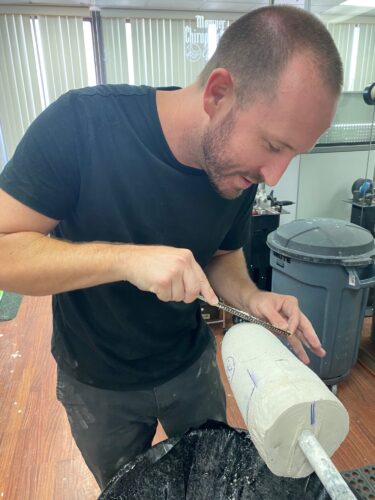Prosthetic & Orthotic
Associates of Hawaii
1314 S. King Street
Suite 1564
Honolulu, HI 96814
Phone: (808) 597-1773
Fax: (808) 597-1772
Email:
[email protected]


Are you an athlete with a below knee amputation looking for a dynamic prosthesis to use in competition? A young professional with a short above knee amputation who doesn’t want to worry about your leg coming off whenever you sit? Someone with a hip disarticulate amputation who would like to walk independently? No matter what your level of amputation, we have the solutions for you, including POA’s patented double-wall Negative Pressure Socket (NPS) for above knee amputees, patent pending Patterson Propulsion Socket (PPS) for Knee Disarticulate and Symes amputees, the supra flex system (with and w/o vacuum) for below knee amputees, our unique silicone-lined hip disarticulate socket, and prosthetic systems for rotationplasty, PFFD, and partial foot amputations.
The prosthetic technology is our patented NPS system utilizes a vacuum chamber to remove air from the space between a sheath or sock, the socket of the prosthesis and the liner. The vacuum created by the removal of the air attaches the liner evenly to the socket wall without squeezing. The liner acts like a “second skin,” so the residual limb is not directly exposed to the vacuum. Unlike other prosthetic suspension systems which focus the weight and force of the prosthesis on one point at the bottom of the socket, vacuum systems spread the pressures evenly over the entire socket. The limb does not shift within the socket because captured air is forced out through an opening at the bottom of the socket, which maintains the vacuum with a valve that closes the opening.
NPS sockets provide a superior interface with skin and tissue. Studies have shown that conventional methods of interfacing residual limbs with prosthetic devices (figure A) decrease blood flow and oxygenation of tissue, cause blisters, traps perspiration, and causes sores and abrasions. The NPS Socket promotes healthier skin and increased comfort.
Prosthetic & Orthotic
Associates of Hawaii
1314 S. King Street
Suite 1564
Honolulu, HI 96814
Phone: (808) 597-1773
Fax: (808) 597-1772
Email:
[email protected]